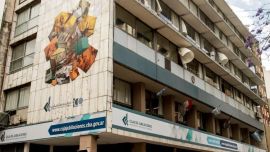Almost 39 percent of the population is living in poverty and half of Argentina would be poor without child benefit and welfare support programmes, a new report has warned.
The study, produced by the influential Social Debt Observatory of the Catholic University of Argentina (UCA), says that almost four in every 10 in the country are poor and that poverty is at its highest level since 2006. Worryingly, those aged under 17 are the most affected, it adds.
In addition, 8.1 percent of the population is living in extreme poverty, defined as those who have an income that is insufficient to cover the basic food basket. The figure would rise to 19.6 percent if the Universal Child Allowance (AUH), other programmes and non-contributory pensions were not taken into account, says the report.
The study from UCA’s Observatorio de la Deuda Social – which gained prominence during the administration of former president Cristina Fernández de Kirchner as official statistics became unreliable – says that the poverty rate reaches 38.9 percent of the population, a figure last seen in 2006, that is, 17 years ago.
A worrying trend is reinforced throughout the data. Poverty is highest in the age group up to 17 years old, running to 61.6 percent, it adds.
The study found that since 2013 Argentina’s poverty rate has been growing in line with the increase in government social spending in relation to GDP. That means that over the last decade more people lost access to basic goods and services despite the expansion of public spending to meet their needs.
In 2013, 25.3 percent of the population lived below the poverty line in Argentina and social spending represented 12.5 percent of GDP. A decade later, with social spending increasing to 17 percent of GDP, poverty impacts almost 40 percent of the population.
The Observatory defines poverty as "unfair economic deprivations that affect the development of human capabilities in different dimensions of social life.”
"It is as important to identify the complexity of social debts as it is to understand the multiple causes that explain them. This is not for the purpose of denunciation, but in order to overcome the structural barriers that limit integral human development in our society. A look at deprivation that goes beyond monetary income contributes in this sense," the report adds.
With inflation continuing to rise, and following the 22 percent devaluation of the peso triggered by the government after the PASO primaries, the number of poor is expected to soar next month when INDEC announces the official poverty rate.
Current poverty indicators (as of the second half of 2022) are close to the UCA report. According to the government, 39.2 percent of the population is poor, with extreme poverty reaching 8.1 percent.
Out of 9,908,229 households belonging to 31 urban agglomerates, 2,928,152 households are below the poverty line, said INDEC. Of this total, 614,043 households are below the extreme poverty line.
– TIMES/NA
























Comments